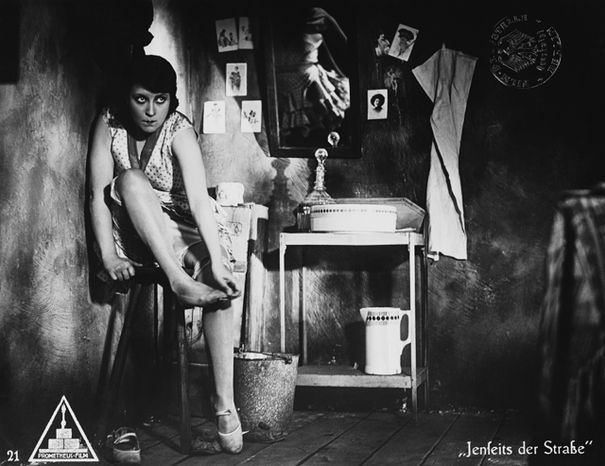Death on the Harbour
A trip back in time with Leo Mittler’s silent film JENSEITS DER STRASSE, part of the Berlinale Retrospektive "The Red Dream Factory".

Leo Mittler’s JENSEITS DER STRASSE
Death means nothing to the desperate and the greedy in Leo Mittler’s silent film JENSEITS DER STRASSE (1929) that runs in the Berlinale Retrospektive "The Red Dream Factory". This little-known silent, proletarian film was produced by Prometheus, a German subsidiary of the Russian production company Mezhrabpom-Film. The film opens in a park, where a man is reading a report in the newspaper announcing the death of an old man presumed to be a beggar. A flashback draws us into the lives of the nameless players in the events leading up to the man’s death.
An unemployed youth (Fritz Genschow) and a prostitute (Lissy Arna) join the beggar (Paul Rehkopf) in a rat race over a string of pearls that fall off a wealthy lady at the city harbour. Seemingly their ticket out of poverty, the necklace soon evolves from a good luck charm to an albatross. Given a large sum of money as alms, the beggar imagines himself savouring the best cigars and then goes to a bar to celebrate. The jobless youth and the prostitute fall in love, and the beggar begins to distrust this young man with whom he once shared a home. The entrance of an infamous smuggler (Sig Arno) adds a darker twist to the tale, and as selfish interests take over, it’s impossible to sympathise with anyone but the beggar.
The plot of Mittler’s film is easy to follow, but the director sometimes focuses too much on life around the harbour: scenes of dockworkers and coal stokers going about their work distract from the impending drama. The scene where the necklace falls becomes a monumental moment, with a volley of shots showing the expressions on the beggar and the prostitute’s faces as both realise that a pot of gold has just fallen into their laps.
As it all winds down, the beggar can’t escape his pursuers and ends up dead at the bottom of the sea; the youth is hunted as the likely murderer; and the necklace is discovered to be a fake. This is the news the man in the park seems to be reading, but hasn’t been reading at all. His only interest is in the time he will enjoy with the prostitute, who is sitting across from him. For the prostitute, life goes on as usual as she heads off with her latest client. Which returns us to the question posed at the start of the film in regards to a beggar, a prostitute and an unemployed young man on the harbour: “Who takes the time to think about them while enjoying a cup of coffee and a cigar?”
JENSEITS DER STRASSE tells a timeless story that wouldn’t be out of place in modern times. It shines a spotlight on the lives of members of the underclass and subtly leads the audience to reflect upon their own social position.


301 Moved Permanently